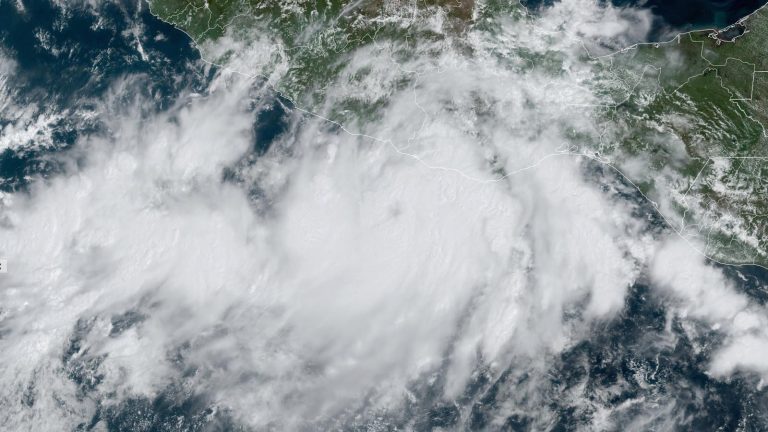A potentially devastating hurricane is hitting Mexico in the Pacific. As of 11 a.m. ET Monday, Tropical Storm John was rapidly intensifying about 105 miles south of Punta Maldonado, which is on Mexico's southern coast near the border between Guerrero and Oaxaca and about 10 miles south of Albania. About 80 miles east-southeast of Capulco. John is drifting north at 3 miles per hour (4.8 km/h).
#John is clearly keen to reach the limit of its environment and has stepped on the gas. Vortical hot towers are now wrapping to solidify further the already established low-level and mid-level cores, and it's likely a dangerous hurricane is on the approach to Southern Mexico. pic.twitter.com/vM6YHdr3ZC
— Kacper (@KacperWx) September 23, 2024
John had maximum sustained winds of 70 mph (113 km/h) on Monday morning, and just 12 hours later, the area was still officially a tropical depression with winds of 30 mph (48 km/h). Therefore, this storm has exceeded the definition of rapid intensification. Conditions are almost ideal for rapid intensification that may continue into the expected landfall on Tuesday. The sea surface temperature in front of John is 30-31 degrees Celsius (86-88°F); the wind shear is light and the speed drops to about 5 knots; John is in a humid atmosphere with a moderate relative humidity of about 70%. Ocean heat below John's path will be fairly limited since John is already close to the coast and in shallow water, but given the generally extremely favorable conditions this should be little of an obstacle for John. John is expected to continue moving slowly northeast and make landfall along the western coast of Oaxaca on Tuesday afternoon or evening.
There are ominous precedents for extremely rapid intensification off the coast of Mexico, including Hurricane Patricia (2015) and Hurricane Otis (2023). Patricia surged from tropical storm to Category 5 intensity within 24 hours, generating the strongest sustained tropical cyclone winds ever recorded globally (estimated at 215 mph), before weakening and striking sparsely populated areas before making landfall. . Otis upgraded from an official tropical storm to a Category 5 hurricane even faster than Patricia (in just 12 hours), displacing Patricia with a catastrophic direct hit on Acapulco at near peak intensity Xia became the most powerful hurricane ever to make landfall in the Pacific, and became Mexico's costliest hurricane on record.


There are no major cities before John, but its rapid intensification and slow movement could result in really dangerous rainfall totals – localized rainfall amounts could exceed 30 inches (760 mm) and widespread 10-20 inches (250-500 mm) – which Catastrophic flooding and mudslides could result. Severe storm surges were possible east of where John came ashore.
We help millions of people understand climate change and what to do about it. Help us reach more people like you.
